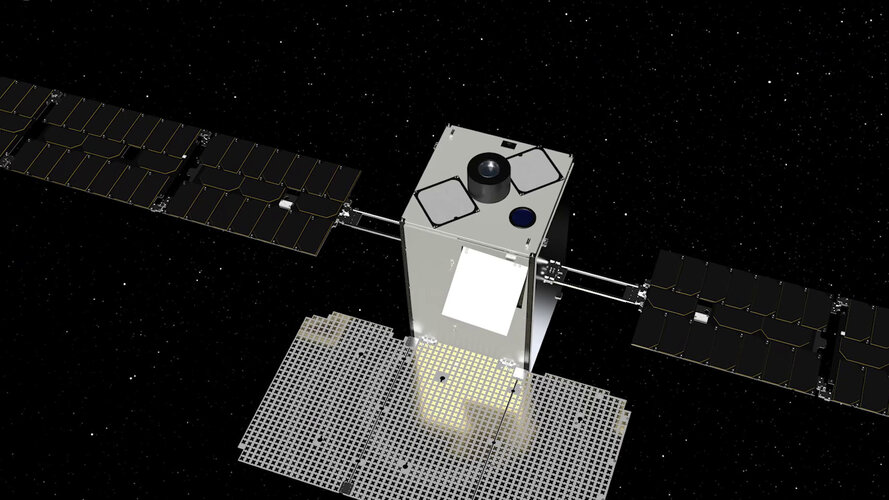
When M-Argo launches, it will be the smallest spacecraft to traverse interplanetary space under its own power. The Miniaturised Asteroid Remote Geophysical Observer (M-Argo) CubeSat will rendezvous with an asteroid, then survey it using a multispectral camera and a laser altimeter. At just 34cm wide on its longest side, the miniature spacecraft contains numerous other technologies detailed in this video, including an electric propulsion system, a high frequency ‘X-band’ communications system and a flat panel ‘reflectarray’ antenna. This will enable the satellite to communicate with Earth even from 150 million km away.
M-Argo is a 12-unit CubeSat – with a 22 x 22 x 34 cm body – that would hitch a ride on the launch of a larger space mission whose trajectory takes it beyond Earth orbit, such as astronomy missions to a Sun–Earth Lagrange point. The CubeSat would then use its own miniaturised electric thruster to take it into deep space and rendezvous with an asteroid, which it would survey using a multispectral camera and a laser altimeter to look for resources such as hydrated minerals that could be extracted in future.
The low-cost nature of smaller spacecraft such as M-Argo paves the way for sending 10 to 20 such CubeSats to scout different asteroids, to perform a wide-scale survey of the near-Earth asteroid population – helping us get to know our neighbours better, both for science purposes and, ultimately, to identify in-situ resources for future exploitation. The mission is supported through the Fly element of the Agency’s General Support Technology Programme, with a team from GomSpace in Luxembourg and Politecnico di Milano in Italy.
Click here for original story, M-Argo: ESA’s asteroid-targeting CubeSat
Source: ESA Top Multimedia